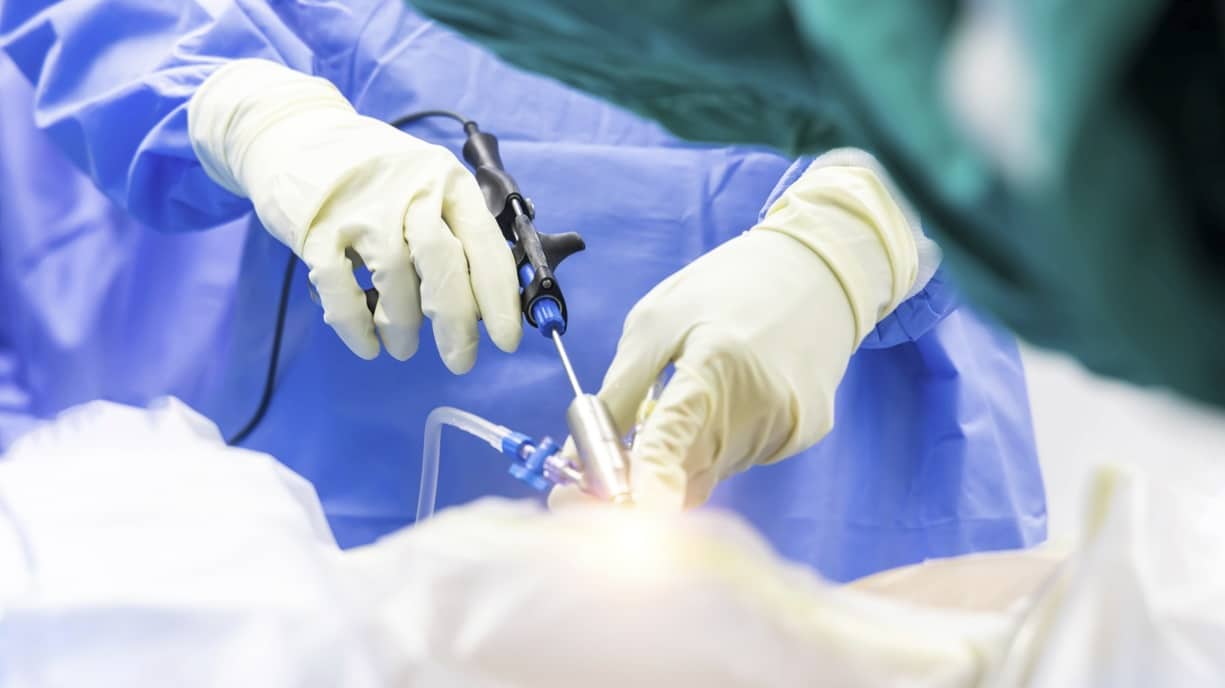A minimally invasive surgical technique is offering spinal patients greater flexibility, range of motion and quality of life. Motion preservation spine surgery (MPSS) provides patients with the spinal care they need while protecting their range of motion and decreasing pain and recovery times.
In this article, we will explore motion preservation surgery, the conditions it treats, and its benefits and limiting factors.
What is motion preservation spine surgery?
Motion preservation spine surgery is a term that encompasses several cutting-edge surgical techniques to treat spinal conditions while maintaining movement. Our spine physicians do this by implanting special motion preservation devices, like spacers, cords, screws, rods or total replacement discs or facet joints.
For years, researchers sought alternative treatments for spinal fusion surgery. In the early 2000s, the FDA approved the first artificial disc replacement technology. Other technologies and surgical techniques focused on maintaining the natural motion of the spine, and preventing disc degeneration soon followed.
Today, ongoing research and development have led to innovative surgical options. Our goal is to continuously improve stabilization and motion preservation. Motion preservation spine surgery is one way to do that.
MPSS aims to maintain normal or nearly normal motion to prevent some of the negative outcomes normally associated with spinal fusion. Major negative side effects of cervical or lumbar fusions, like adjacent segment degenerative disc disease or loss of range of motion and flexibility, are not as significant or even non-existent with motion preservation surgery.
Diagnoses best treated with motion preservation spine surgery
Patients with painful or debilitating spine disorders want to be more active and enjoy their lives free from pain. While spine fusion is necessary for some patients, non-fusion spine surgery is often a more desirable treatment option.
Some spine disorders that respond well to minimally invasive spine surgery include:
- Degenerative disc disease
- Spinal stenosis
- Herniated discs
- Scoliosis
- Kyphosis
- Spondylosis
- Spondylolisthesis
- Sciatic nerve pain
- Osteoarthritis facet pain
- And more
How is the procedure different than traditional spinal fusion
The difference between the two surgeries lies in the method used to fix the spinal disorder. For some people, a spinal fusion is the best fit for their unique situation, health and overall goals. For others, regenerative medicine or motion preservation surgery may be a better fit.
Spinal fusion surgery fuses two or more adjacent vertebrae to straighten or stabilize the spine. Spinal fusions limit flexibility but provide stability. Over time, this remedy can strain other vertebrae nearby that are not fused and can lead to other discs breaking down, more pain and the need for additional treatment or surgeries.
Motion preservation spine surgery seeks to keep the spine’s ability to move as close to normal as possible. It uses different types of devices or other technology to replace or stabilize diseased areas. It is normally a minimally invasive procedure, which decreases pain and speeds up recovery.
Motion preservation spine surgery may involve:
- A total disc replacement
- A partial disc replacement
- Spacers in the spine
- Dynamic stabilization devices
- Or total facet replacement devices
Benefits of motion preservation spine surgery
There are many benefits of MPSS, including shorter recovery and rehabilitation, decreased pain, greater range of motion and faster return to daily activities.
The benefits are in part due to motion preservation surgery’s minimally invasive approach, allowing orthopaedic surgeons to address back pain with less blood loss, post-operative pain, scarring and without the long recovery of open surgery.
Other benefits result from the treatment methodology. Motion preservation spine surgery addresses each diseased component to maintain the spine’s normal range of motion. This places less stress on adjacent discs, decreasing the likelihood of degeneration or additional surgeries.
Because of these benefits, Cary Orthopaedics’ spine experts seek to use minimally invasive techniques and motion-preserving surgeries when our patients’ overall health and condition permit it.
Risk factors for motion preservation spine surgery
While there are many benefits of motion preservation surgery, there are some limitations as well.
- Not one-size-fits-all. Motion preservation surgery is not always the best treatment for all patients. Some disorders are best treated with another approach. A spine surgeon should evaluate your spine, the severity of your disorder, your overall health and any other limitations before moving forward.
- Device-related risks. As with any medically implanted devices or components, there is always a risk of breakage or shifting.
- Minimally invasive surgery still has the risks of surgery. Though motion preservation surgery is minimally invasive, the risk of infection, blood clots and nerve damage is always a possibility.
- Long-term data is not in yet. Motion preservation spine surgery is still relatively new in comparison to spinal fusion, so researchers do not have as much data on long-term outcomes and potential complications.
Cary Orthopaedics’ spine care team is ready to help you
If you are suffering from back pain and limited movement, Cary Orthopaedics’ spine care team has the experience and expertise you need to gain relief. As the Triangle’s only comprehensive spine practice, we have the specialists you need under one roof! From regenerative medicine and diagnostics to surgery and physical therapy, we offer a broad continuum of care.
Our staff looks forward to learning more about your back problems and identifying the best treatment plan for you. If surgery is recommended, we can discuss whether motion preservation spine surgery is right for you to consider. Contact our spine care team today to learn more.






